|
 |
|
This page includes:
-
Single stage driver's frontal airbags
-
Dual stage driver's frontal airbags
-
Smart airbags (Driver's Frontal)
-
Seat position sensors.
For more advanced information see the power point presentation:
Airbags and New Technology Part 1&2. (coming
soon)

| |
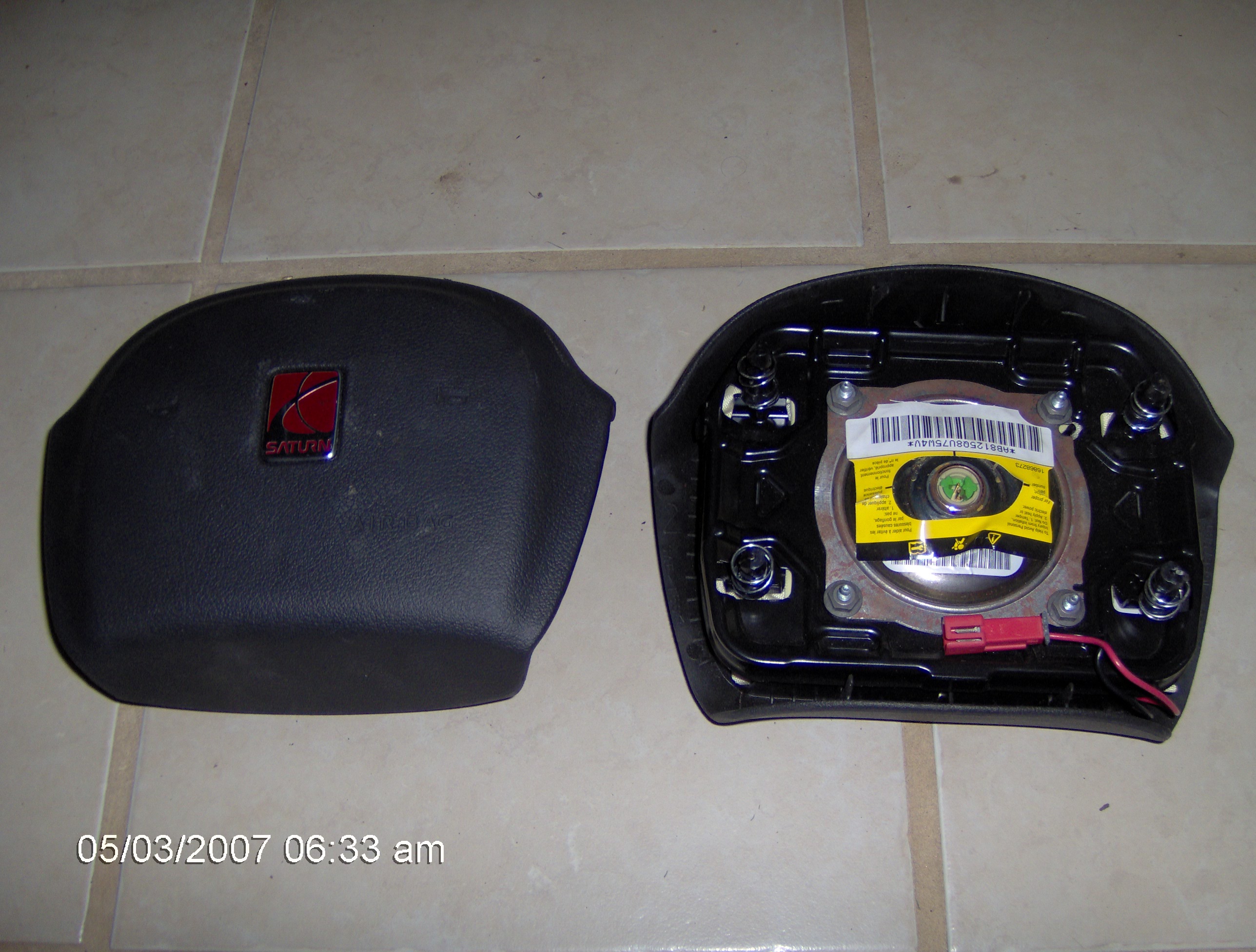
|
| Click picture to enlarge |
This is a single stage driver’s frontal airbag.
Enlarge the picture and notice the single plug in the center of the inflator module.
These were the first airbags installed in vehicles and were used by some manufacturers through the 2006 model year.
Though they operate the same, very few look alike, each one is shaped to fit a particular steering wheel design.

|
| Click picture to enlarge |
The inflation zone for these is 10 inches from the center of
the steering wheel to any part of the driver's body.
Rescuers should never put themselves or any type of equipment
between this airbag and the victim.
Since the early 1970s rescuers have been taught that if the airbag is deployed,
there is no more danger, it can not deploy a second time.
Warning! This
is no longer true!

|
| Click picture to enlarge |
This is a driver's dual stage frontal airbag. Enlarge the picture
and notice the two plugs in the center of the inflator module.
These have two individual inflator units that can be deployed individually
or both at the same time.
Though these have been used for several years, federal standards require
them in every vehicle from 2007-up.

Warning!
Rescuers must never enter the 10 inch inflation
zone of any driver's frontal airbag.

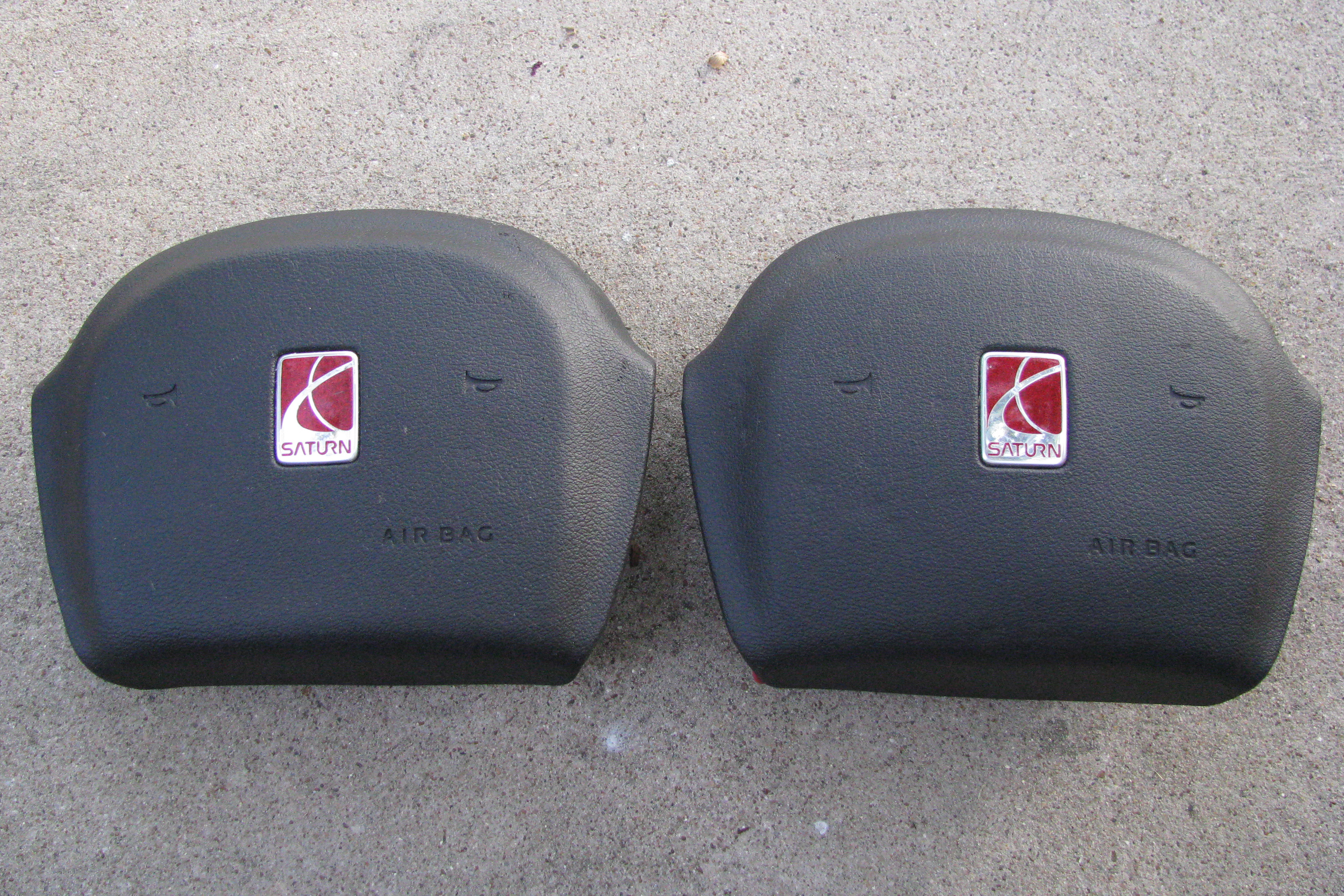
|
| Click picture to enlarge |
From the front side, which is what the rescuer would be looking
at, many of these look identical.
When installed in the vehicle it is impossible to tell which
one is single stage or which is a dual stage.

|
| Click picture to enlarge |
Being bolted to the steering wheel, rescuers could never see
this view.
With each inflator unit being able to deploy individually, many times
one side will still be loaded, even though you see the nylon bag hanging down.
Warning! It is impossible to visually tell
if both sides have deployed or not.
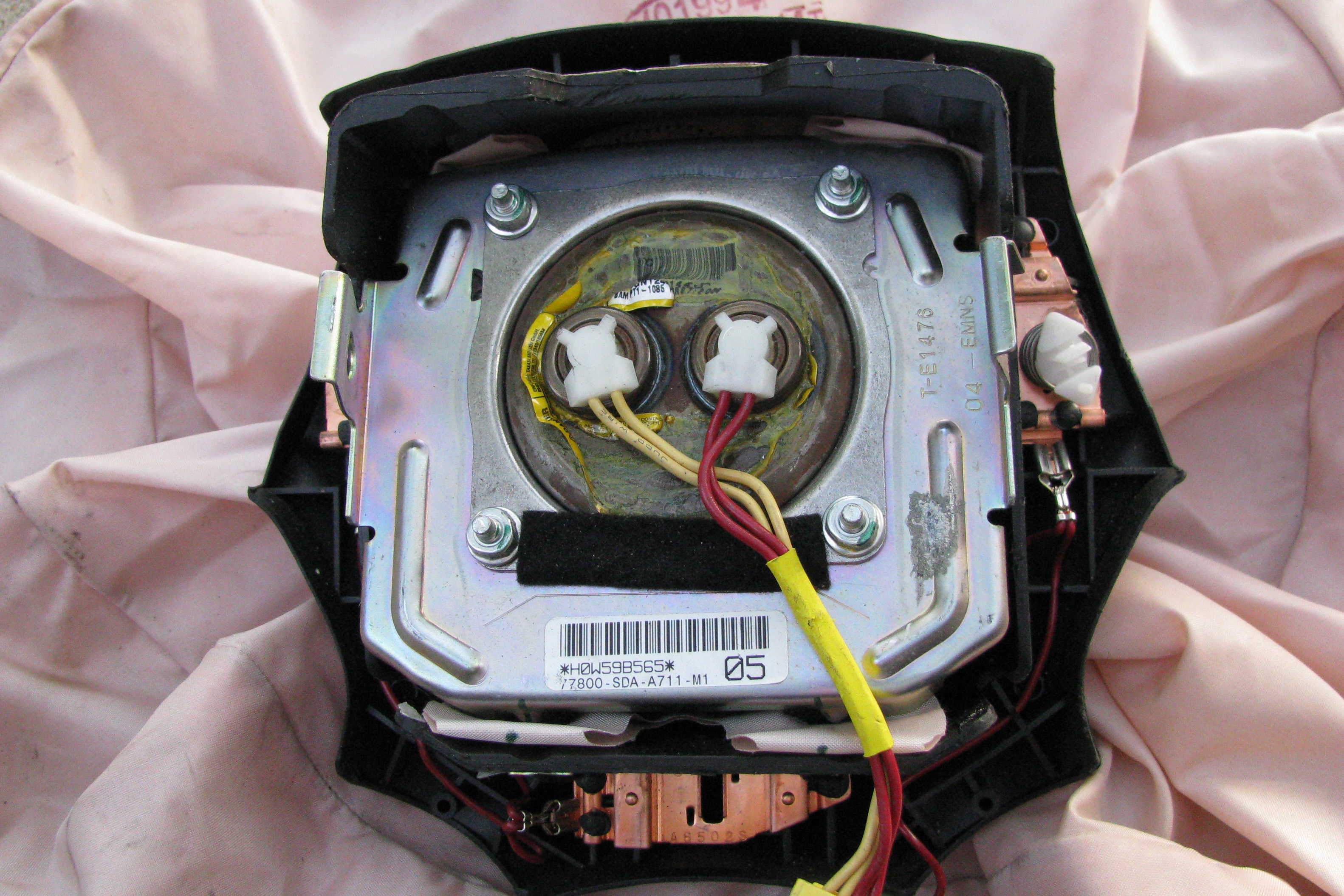
|
| Click picture to enlarge |
Even looking at the back side, it is impossible to tell which
side is deployed.
This airbag was deployed under controlled conditions for a classroom display.
One side is still loaded, but even looking at the plugs, it is impossible to tell which side deployed.

Warning!
Today we must treat every frontal air bag
as if it was a non-deployed
one.
Never put yourself or any piece
of equipment
between the air bag and your victim.
 . .
Second Generation or
Smart Airbags
Smart airbags, is simply a name given dual stage airbag systems; because by
the uses of sensors and controls they can regulate their own deployment.
One of the sensors used with the driver's frontal airbag is the
seat position sensor. There are many different types of these sensors but they all do the same thing. They measure the distance
between the seat and the airbag deployment zone, or front of the steering wheel.
This allows the control module
to deploy the airbag according to the occupant's proximity to the inflation zone.

|
| Click picture to enlarge |
These sensors are mounted in the seat adjustment tracks.
Most of these sensors operate in four zones. Zone #1 being the
closest to the steering wheel and zone #4 being the furthest away.
Depending on the zone the seat is in at the time of the crash, the control
module can; not deploy the airbag, deploy only one side, or deploy both sides.
As rescuers; we have always been taught that if a vehicle is
equipped with electrically operated seats, to move the seat as far back as possible before disconnecting the battery.
Because of the operation of these sensors, many extrication instructors disagree
on this procedure and both sides can be right in their teaching. (Details in the in depth studies).
As a general rule of thumb; Consider the size of the occupant, if you
have sufficient room to perform your rescue without compromising the vitim's spinal alignment, simply adjust the back rest
portion of the seat, to assure they are out of the inflation zone. If not then move the seat, but be sure that it is moved
as far as possible; because this action will change the path of deployment in the control module, setting the airbag up for
a second deployment should an accidental charge of electricity enter the system.

Frequent Ask Questions
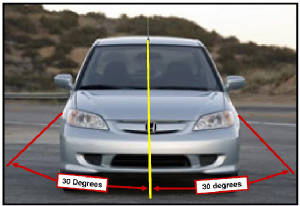
|
| Click picture to enlarge |
Many questions arise about why these airbags deploy
in some crashes and not in others. Being a frontal impact airbag, these will only deploy in a front end type collision. The
vehicle must be impacted either straight on or within a 30 degree angle from either side of the center line of the vehicle.
Also these systems depend on crash sensors that
must experience a certain amount of deceleration, or sudden slowing of the vehicle. Many times a vehicle that sets higher
than the one it hits, will impact above the crash sensors and the thinner metal of the hood and fenders will absorb the
impact, not allowing the crash sensor to experience enough deceleration. (This is covered in the in
depth studies)

Another question is about the use of steering wheel
covers:
This one gives us a very good example of how we develop our training and
why we so desperately need a change in our training. Take a look at conversations we find on major fire/rescue forum
boards.
The forum below is a very good example of the desperate
need for training and the lack of funding for it.
Does anyone use airbag
/ steering wheel covers during extrication? I am not sure what companys make this product with the exception of Halmatro.
------------------------------------------------------------------------------
Capt, I have toyed
with this subject matter recently, and did some experiementing during training. Being that few departments have the actual
tested products, including ours, I did some field testing with some homemade devices. We took seatbelts out of vehicles and
made a simple device by weaving them together to make a 4 point connection which diverted the force, we used the simple rescue
rope technique, but, the one we found that worked the best was an idea that I came up with while working out in the gym. I
saw the weightlifting belts and how the design of it could be used, with the portion that protects the lower back being larger
and oval. I took one out to the training ground and the connection was simple and extremely strong. The leather belt had a
good coverage and the buckle had 4 reinforced points of contact. None of these procedures are sanctioned
by any formal organization, but I figured something was better than nothing........I
think we will find the approved products working their way into our cache of equpment as a necessity with the increasing technological
aspects of todays vehicle market.....Thanks
Thats a great idea
and a heck of alot cheaper than purchasing the airbag covers. Specially if you are on a tight budget.. Way to go in adapting and overcoming in the efforts to protect yourself
and fellow brothers and sisters.. I will take this idea back to my department and try it out. Thanks
for the input.. And hey ya know if you find a way to modify the design of that back brace and still be effective you could
always market it...
----------------------------------------------------------------------------------------------
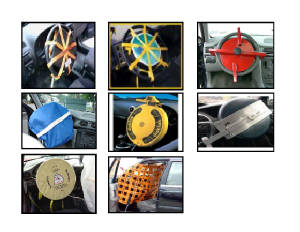
There is equipment
on the market to protect us from the driver’s frontal air bags. Some departments have them and SOPs or SOGs in
place for using them, but let’s take a look at what they do.
First they are only protecting us from one of the 37 danger that you
will see in the in depth studies.
Secondly,
they can factor in human error by not being applied properly. In the in depth study, you will find that the
second part of our tactic of working With the system, protects us from this human error. Rushing to an MVA at 3:00 am, have you ever made a mistake? Let’s
say we did make a mistake, now we have a projectile traveling at 2-3 hundred mph directly into an already injured victims’
face. Now we have a real problem, this projectile just took the liability off of the manufacture and put it on you and your
department, because it was not properly installed.
Thirdly, we can build
a false sense of security allowing us to put our self in the inflation zone
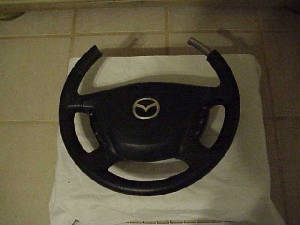
|
| Click picture to enlarge |
Finally, when these covers were being developed
in the late ’80s and early ‘90s, we were faced with one single stage airbag per vehicle, and steering wheels with
a steel ring inside them. Today we may be faced with as many as twelve airbags per vehicle and new steering wheel construction
that may not be able to hold some types of these covers
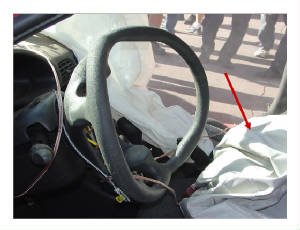
|
| Click picture to enlarge |
Many steering wheels no longer
have a steel ring inside them. Most of the newer models have an aluminum tube as shown Above. These tubes are actually
made to bend, in order to lessen chest injuries in a sever crash. The force of an airbag deployment against the cover can
easily bend one, as seen here releasing the cover as a projectile. With the dual stage airbags
of today we have the risk of a second deployment, doubling the chance of this happening.
|

